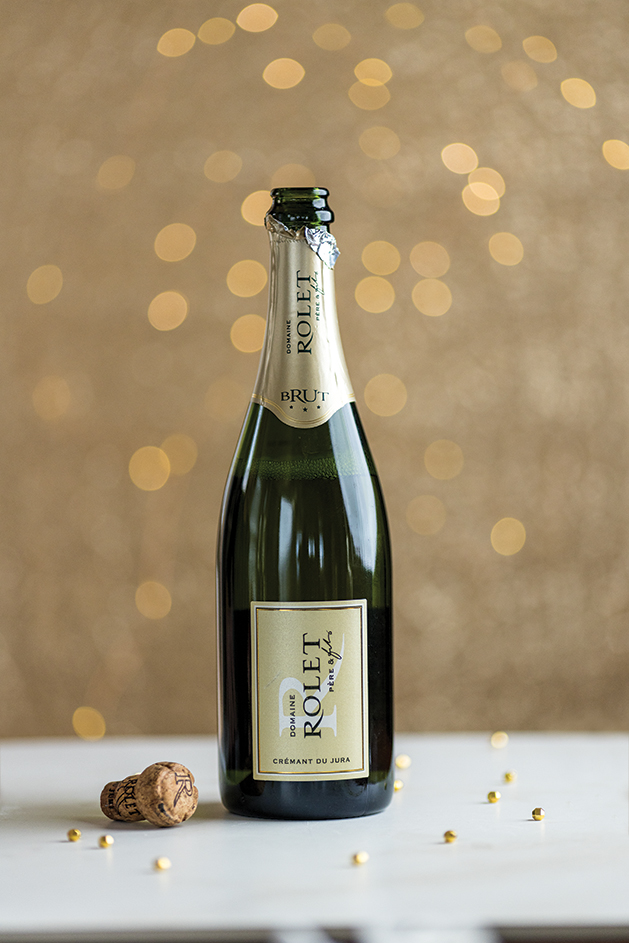
Photos: Chris Emoett
Getting to know crémant, the sparkling wine made the Champagne way.
Popping the cork on a bottle of bubbly can fill a room with celebratory spirits. As we move into brunch season and springtime celebrations, let’s take a closer look at a Champagne’s lesser-known cousin.
With the same richness and body of Champagne, crémant (pronounced kruh-maant) brings party vibes just the same—at a fraction of the price. To learn more about the sparkler, we spoke with The Wine Shop’s wine buyer Gary Seelen, who has Level 3 certification from the Wine and Spirit Education Trust.
What is crémant?
Crémant is the name used for sparkling wine made in the same method of Champagne—often called traditional or méthode champenoise in other parts of France. [It is made in France and Luxembourg.] The term Champagne can only be used for sparkling wines made in the Champagne region of France. Crémants often use the same grapes as Champagne, however, the grapes or blends differ by region. Single varietal or blend rules are set by the regions. The two most well-known [varieties] crémant d’Alsace … and crémant de Loire [sometimes] blend in different grapes than those allowed in Champagne …

What’s the production process?
The traditional method was discovered in Limoux, France, in the Pyrenees more than 100 years before Dom Pérignon in Champagne, who often gets credit. Crémant is made in the same method as Champagne. [Briefly, the process includes fermenting still wine, usually in a barrel, followed by bottling the wine and inoculating it to start a second fermentation.] As the second fermentation occurs, the creation of alcohol releases [carbon dioxide], but it cannot escape the bottle, thus creating the bubbles. Sparkling wines will age in the bottles on the dead yeast cells over time, where the bottles are partially turned in the racks called riddling, creating the creamy texture you taste in traditional method crémants. After aging on the dead yeast cells … the necks of the bottle are frozen, the yeast cells disgorged, and a small amount dosage—sugar and still wine—is added back to top off the bottles.
How many crémants are there?
Too many to count. [Many of them don’t make it to the U.S.]
Does crémant run sweet or dry?
It can be either. It depends on the amount of sugar added during dosage. The driest crémants will be topped with wine, no sugar added.
How does crémant differ from Champagne?
[It is] generally lighter, less PH, less acid and usually less time on the lees.
How does crémant compare to prosecco?
Proseccos are made in large, sealed tanks with [carbon dioxide] added in tank to help create bubbles. Crémants, similar to Champagne, are richer, creamier, less sweet and have a higher concentration of bubbles.
Does crémant have the ability to age?
They are meant to be [consumed] young; they will not age like Champagne, but three to five years is generally OK.
What crémant optimal temperature?
All sparkling [wines] should be served around 45–50 degrees F [the same temperature as Champagne].”
How about food pairings?
I always want to demystify it, make it accessible to everyone. People should drink what they like with what they like, however, there are some classic pairings. Oysters are usually number one in people’s minds, but other shellfish work well—lobster, scallops, crab. [Consider] nonstinky cheese and salty foods, even potato chips.
Why isn’t crémant as well known?
Marketing—follow the money. The different regions that make crémants are more known for their still wines that can often age and can sell large quantities …
A few of your favorite crémants?
Alsace is number one for me—creamy and fresh with excellent rosé …
How do we shop for a crémant?
Ask your wine merchant for recommendations on what they carry. You can get great crémants between $15 and $25.






















